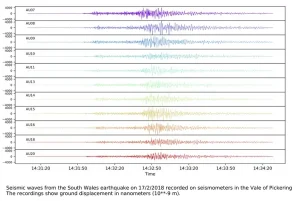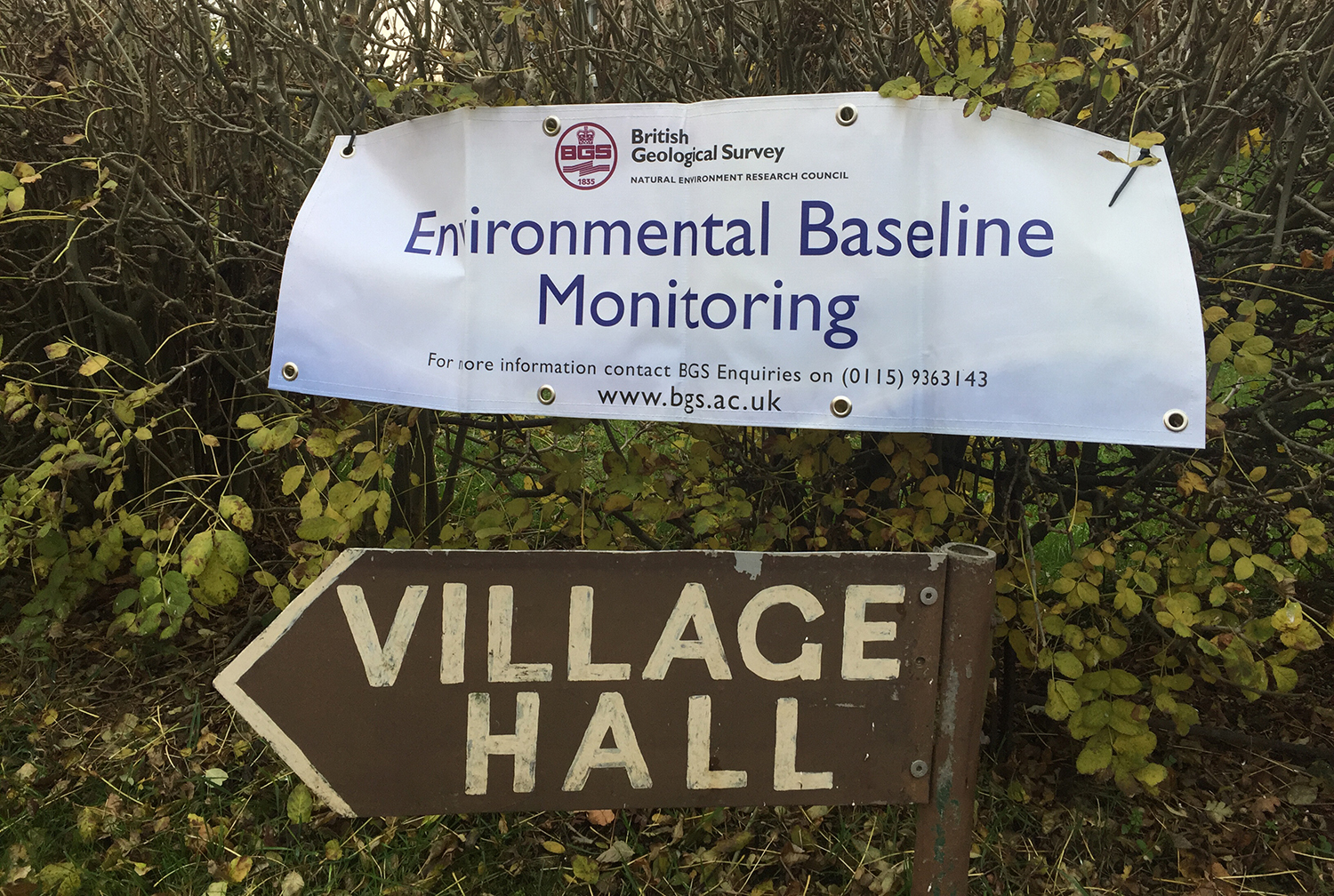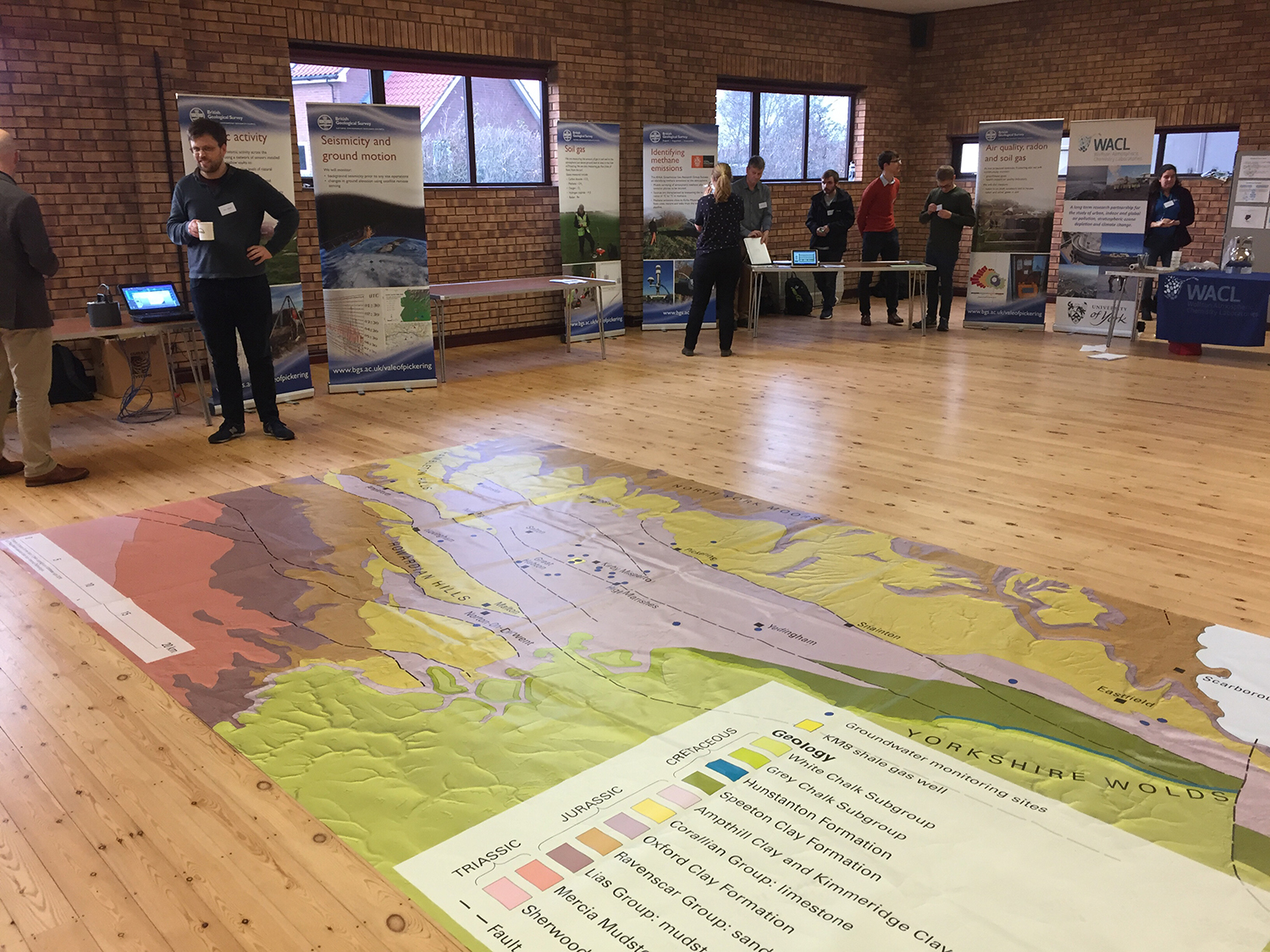An important part of the environmental baseline monitoring project was communicating with the local communities and other stakeholders who supported us in the areas of investigation. This was done in a variety of ways to reach out to the widest possible audience.
We recognise that, without the support of local communities and site owners, we could not have delivered a successful monitoring programme. Throughout, we provided opportunities to find out about the monitoring we were carrying out, how we were going about it and what the results were showing.
Community events
In addition to the project reports, available through our project web pages and the NERC Open Research Archive (NORA), we held a number of community ‘drop-in’ events in Lancashire and the Vale of Pickering. These were well received and provided members of the public, community groups and local industry with opportunities to talk to the project scientists about their work and ask questions. These informal events, held over an afternoon and evening, allowed people to attend at a time to suit them.
Videos
We prepared two YouTube videos from two of our events in Lancashire and the Vale of Pickering. These include interviews with some of those attending as well as the scientists involved.
We also prepared videos on our different monitoring activities. These show the instrumentation being used and provide an explanation of how it was deployed. All of the videos are available on YouTube:
Web pages
Our web pages remain active and our data portal provides the latest real-time groundwater and seismic monitoring data available. The data are transmitted to BGS from the field sites.
Real-time data
We know that our real-time data display is popular, because, when we temporarily lose the data feed or an event occurs, users often contact us to let us know or notify others by social media. The feedback we receive from users is helpful, as it helps us improve our monitoring.
A good example was when a significant earthquake (magnitude 4.4) which occurred in South Wales on 17 February 2018. A member of the public and social media notified us that this could not be seen on our real-time data display for some of the seismometers close to Kirby Misperton in the Vale of Pickering. The seismometers had recently been replaced and, even though data was still being recorded, BGS was able to make adjustments to the ‘gain’ (similar to increasing the volume) so that the event was seen on the graph.

The magnitude 4.4 earthquake in South Wales (17 February 2018) as measured by the seismometers installed in the Vale of Pickering. BGS © UKRI.
Citizen science
The environmental monitoring carried out requires significant support from the community. This support was provided in a variety of ways and included property owners and industry granting us access to sample their boreholes for groundwater on a regular basis, or giving us permission to install our own monitoring points on their land. We sampled around 25 groundwater monitoring points in each of our study areas and, at the time of active investigations, installed 12 seismometers in the Vale of Pickering. We provide copies of the groundwater and surface water analysis results to the borehole owners.
However, perhaps the most impressive public participation was with the indoor radon (Rn) measurement. This requires householders to volunteer to participate in our Rn measurement study by agreeing to us measuring Rn in their homes. Over 130 households across the Vale of Pickering and a similar number in Lancashire volunteered to receive a Rn measurement pack. This comprised two Rn detectors; one to be placed in the living area and another in a main bedroom. After three months, the detectors were posted back to Public Health England (PHE, now the UK Health Security Agency) for analysis and new ones provided.
The results verified the accuracy of the Rn potential map for the area. They also identified a small number of households with natural Rn levels above the UK action level (200 Bq/m3). Where this occurred, PHE contacted the householder to provide advice on any action required to reduce radon levels.
Contact
Please contact BGS enquiries (enquiries@bgs.ac.uk) for further information.



